Defiant strokes: Hauser & Wirth hosts Philip Guston's transitional work
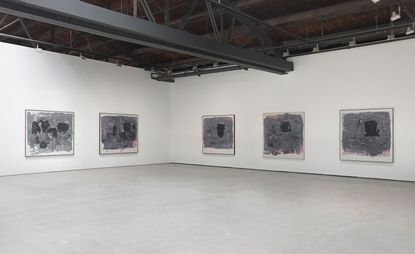
American artist Philip Guston – while perhaps not a household name like his New York School contemporary and onetime high school classmate Jackson Pollock – embodied many of the conflicts and contradictions inherent in 20th century modern art. Over the course of his career, Guston was almost chameleonic – routinely shifting his focus from the abstract to the figurative while attempting to reconicle gestural and field painting in the process.
The artist’s dialectic approach is explored in Hauser & Wirth’s ‘Philip Guston: Painter, 1957 – 1967,’ a compelling collection of 36 painting and 53 drawings. Drawn from private collections and museums (only a fraction of the pieces are up for sale), it is the most extensive showing from this body of Guston’s work to be displayed in some fifty years.
The work on view in Hauser & Wirth’s capacious Chelsea compound represents what critics call Guston’s ‘transitional period.’ As Hauser & Wirth partner and curator Paul Schimmel notes, however, the decade was actually entirely epochal for the artist. In fact, the exhibition brings us closer to Guston, a man who was in the process of pushing back against the burden of early career success as well as the confines of the Abstract Impressionist movement. According to Schimmel, Guston refused 'to be pinned down or to rest on his own considerable accomplishments and influence.'
Guston’s less appreciated paintings completed during this period mark a strident move away from his New York School days and the constraints of the Modern Art Complex.
The exuberant colours and vigorous strokes of earlier years moved to darker, more tenebrous forms, rendered with a heavier, more limited palette. In a large group of works that includes Stranger (1964) and Portrait I (1965) Guston creates lugubrious, almost cryptic portraits and fields with thick smoky greys. Dense forms imply the artist’s self examination while pink strokes bleed through defiantly.
Towards the end of this pivotal decade, a time that was also personally tumultous for the artist, who had retreated to Woodstock, New York, with his family, Guston swapped painting for drawing. The exhibition’s last section presents the artist’s 'pure drawings,' which were created in a two-year span between 1966 and 1967. Displayed together in a grid, the pieces offer a kind of elemental comfort with their gestures, marks, crude portraits and depictions of architecture and landscapes. 'This period was extraordinarily liberating for Guston,' said Schimmel. 'A clean sheet of paper didn’t represent the encumberments of who he was; he was no longer held back by the pop enemy camp.'
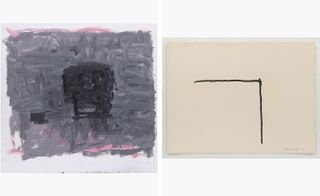
Pictured left: Inhabiter (1965) Courtesy The Museum of Modern Art, New York NY. Gift of Edward R Broida, 2005. Pictured right: Untitled (1967)
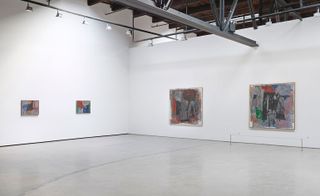
The exhibition brings us closer to Guston, a man who was in the process of pushing back against the burden of early career success as well as the confines of the Abstract Impressionist movement.

The exuberant colours and vigorous strokes of earlier years moved to darker, more tenebrous forms, rendered with a darker, more limited palette. Pictured: The Year (1964).
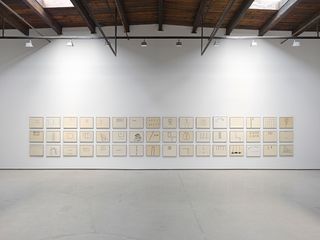
The exhibition’s last section presents the artist’s 'pure drawings,' which were created in a two-year span between 1966 and 1967. Displayed together in a grid, the pieces offer a kind of elemental comfort with their gestures, marks, crude portraits and depictions of architecture and landscapes.
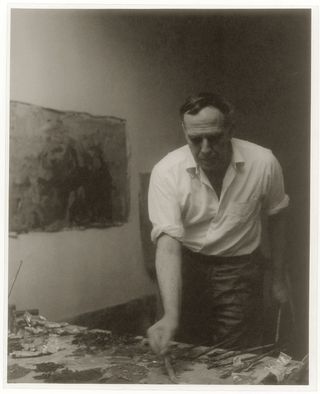
Philip Guston in his studio, New York, 1957.
INFORMATION
‘Philip Guston: Painter, 1957 – 1967’ is on view until 29 July. For more information visit the Hauser & Wirth website
Photography: © The Estate of Philip Guston. Courtesy Hauser & Wirth
ADDRESS
Hauser & Wirth
32 East 69th Street
New York NY 10021
Wallpaper* Newsletter
Receive our daily digest of inspiration, escapism and design stories from around the world direct to your inbox
-
 Elias Sime reflects on the destructive nature of technology in Venice
Elias Sime reflects on the destructive nature of technology in VeniceIn his solo show ‘Elias Sime: Dichotomy ፊት አና ጀርባ’ at the Venice Biennale 2024, the artist spotlights technology's destructive nature for humans and the environment
By Gameli Hamelo Published
-
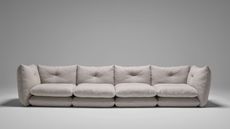 Knoll presents Willo Perron sofa at Salone del Mobile 2024, 'a piece that can stay with you forever'
Knoll presents Willo Perron sofa at Salone del Mobile 2024, 'a piece that can stay with you forever'Salone del Mobile 2024: the ‘Pillo’ sofa by Willo Perron for Knoll is the California-based designer’s first piece for the American brand, prioritising comfort and timeless usability
By Rosa Bertoli Published
-
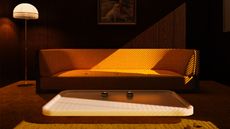 Nuova wants to 'bring time travel to the world' with their debut at Milan Design Week
Nuova wants to 'bring time travel to the world' with their debut at Milan Design WeekCalifornian design studio Nuova has been working behind closed doors for some of the biggest names in luxury and tech. The studio makes its public debut at Milan Design Week 2024, and take visitors on a journey back to 1971
By Laura May Todd Published
-
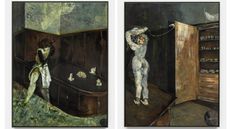 Guglielmo Castelli considers fragility and violence with painting series in Venice
Guglielmo Castelli considers fragility and violence with painting series in VeniceGuglielmo Castelli’s exhibition ‘Improving Songs for Anxious Children’ at Palazzetto Tito, Venice, explores childhood as the genesis of discovery
By Sofia Hallström Published
-
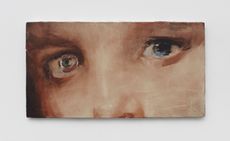 ‘Accordion Fields’ at Lisson Gallery unites painters inspired by London
‘Accordion Fields’ at Lisson Gallery unites painters inspired by London‘Accordian Fields’ at Lisson Gallery is a group show looking at painting linked to London
By Amah-Rose Abrams Published
-
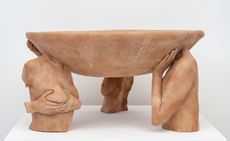 Who is the future of British art? Hauser & Wirth Somerset finds out
Who is the future of British art? Hauser & Wirth Somerset finds out‘Present Tense’ at Hauser & Wirth Somerset showcases some of Britain’s most exciting emerging talents with a group show of 23 artists
By Mary Cleary Published
-
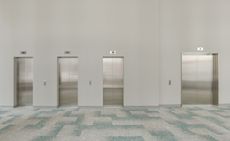 Avery Singer considers 9/11 trauma and corporate anonymity at Hauser & Wirth
Avery Singer considers 9/11 trauma and corporate anonymity at Hauser & Wirth‘Avery Singer: Free Fall’ opens at Hauser & Wirth, London, melding a serene office aesthetic with moments of horror
By Emily Steer Published
-
 Frieze London 2023: what to see and do
Frieze London 2023: what to see and doEverything you want to see at Frieze London 2023 and around the city in our frequently updated guide
By Hannah Silver Last updated
-
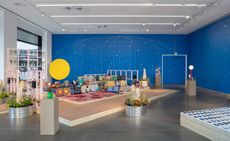 Hospital Rooms and Hauser & Wirth unite for a sensorial London exhibition and auction
Hospital Rooms and Hauser & Wirth unite for a sensorial London exhibition and auctionHospital Rooms and Hauser & Wirth are working together to raise money for arts and mental health charities
By Hannah Silver Published
-
 The best London art exhibitions to see now
The best London art exhibitions to see nowYour guide to the best London art exhibitions, as chosen by the Wallpaper* arts desk
By Hannah Silver Published
-
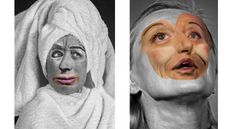 Cindy Sherman’s freaky new portrait collages dissect the divided self
Cindy Sherman’s freaky new portrait collages dissect the divided selfWe preview Cindy Sherman’s new portraits, on view at Hauser & Wirth Zurich during Zurich Art Weekend – which will see digitally manipulated collages explore the many facets of society
By Harriet Lloyd-Smith Published